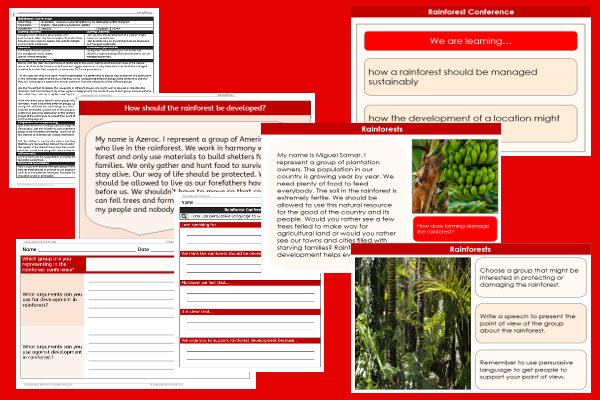Lesson Five – Rainforest Conference

This geography teaching pack for Key Stage Two gets the children to investigate how to identify and debate a range of different viewpoints relating to the destruction and preservation of the rainforest.
The class can practise composing and presenting speeches that might have been given by different groups connected to rainforest development to illustrate why the habitat should be protected in the future.
Download this teaching pack including a lesson plan, classroom activities and an interactive presentation to investigate how to identify and debate a range of different viewpoints relating to the destruction and preservation of the rainforest
Activities in this teaching pack include a shared reading text to identify different viewpoints about managing and developing the rainforest and differentiated templates to select and record the views of one particular group about rainforest management and development.
The interactive presentation can be used to explore and debate different viewpoints relating to the destruction and preservation of the rainforest.
This lesson is part of a geography scheme of work to get the children to identify, illustrate and debate some of the different reasons as to how and why tropical rainforests should be protected and conserved for the future. There are teaching activities for shared learning, differentiated worksheets to support independent learning and interactive presentations to introduce concepts and key skills.
-

Theme Park Visit
Practise identifying and calculating the timing and duration of rides and events when visiting a theme park on a special family trip
-

Family Holiday Trips
Identify and record how to compose and publish recounts using adverbials of time and place to describe family holidays to different places in the world
-

Money Multiplication
Explain and model how to use standard written calculation methods to multiply money amounts in pounds and pence when solving number problems
-

Sport Teams
Explain and model how to use brackets and dashes to add extra information to sentences describing how to play sports and games as part of a team
